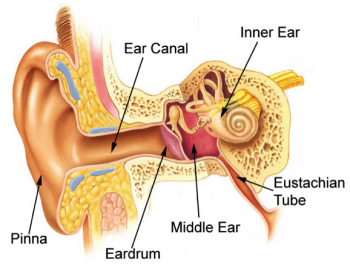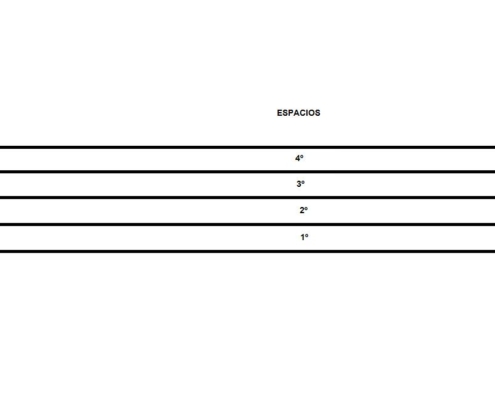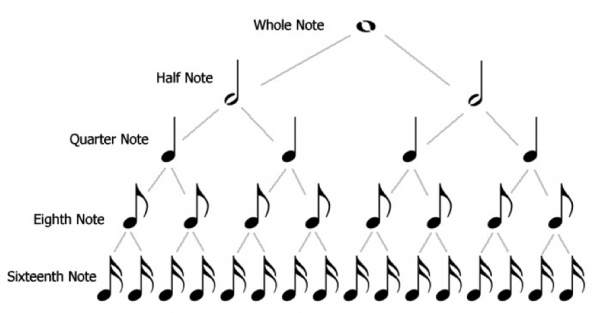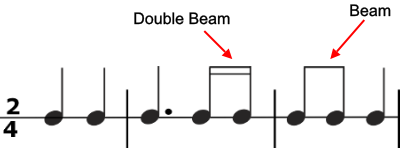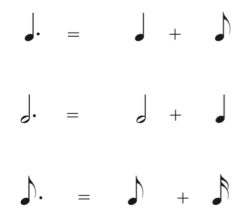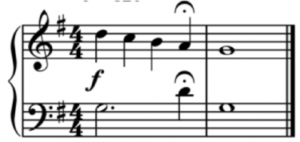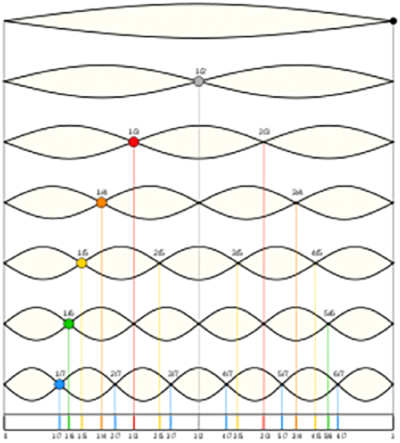SOUND, NOISE AND SILENCE
Music is sound. Sound is made when an object vibrates. It is what a living organism can hear. It travels by sound waves and it is normally pleasant. Sound travels very fast. The sound waves travel through the air at 340 meters per second.
Sounds are picked up by a very thin membrane in our ear, the eardrum, which connects the outer and middle ear. When sound waves hit the eardrum, the information made by its vibration travels to the brain through nerve impulses.
Noise is unpleasant. However, not everyone agrees. For example, most percussion instruments, such as drums, make noise when they are played. Sound waves and noise waves are different. Sound waves are regular but noise waves are irregular.
Finally, silence is the lack of hearing sensation or when you don’t hear anything. There is no such thing as absolute silence. Even if we can´t hear any sounds around us, we can still hear the sounds from inside our body.
QUALITIES OF SOUND
There are 4 basic qualities of sound:
PITCH (Hz) tells us the difference between a low sound and a high sound.
DURATION (Sec.) tells us the difference between a short sound and a long sound.
INTENSITY (dB) tells us the difference between a forte sound and a piano sound.
TIMBRE (Harmonics) that tells you what kind of sound you are listening to.
PITCH
This is the characteristic of sound that tells us the difference between a high sound and a low sound. It depends on the wave frequency: the vibration speed. It is measured in units called hertzes (Hz) which show the number of vibrations per second. A fast wave makes a high sound; a slow wave makes a low sound.
To represent the pitch we use the staff, the clef and the notes. In standard notation, a single musical sound is written as a note. The higher a note is on the staff, the higher the sound is. The staff is written as five horizontal parallel lines. Most music notes are placed on one of these lines or in a space between lines. Extra ledger lines are extra lines that can be added if a note is too high or too low to be on the five staff lines
The clef is the symbol at the beginning of the staff. It tells us the name that the notes are going to receive. The treble clef tells us that the note on the 2nd line is called G (sol). If we know the clef, we can know the names (and the pitch) of the notes on the staff.
DURATION
.
Durartion tells us the difference between a short sound and a long sound. It depends on the wave persistence: how long the wave lasts until fading out.
The duration of a sound is shown using several symbols. In standard notation, a single musical sound is written as a note.
The Parts of a Note:
All of the parts of a written note affect how long it lasts.
Look at the note values equivalency table below. It is a common to beam together the flags of eight notes and sixteenth notes that are part of the same beat, in order to help with reading.
1
Dot: it is a small dot placed on the right of notes and rests. It adds half of their value. Therefore, the length of the dot depends on the note value it goes with.
2
Tie or ligature: it is a curved line that links two or more notes that sound the same, adding up their durations.
Fermata is half of a circle with a dot in the middle. It extends the length of the note (or rest) and interrupts the time measure for a moment.
INTENSITY
.
Intensity tells us the difference between a loud sound and a soft sound. It depends on the wave amplitude, the distance between the points of highest vibration and resting point of the object. It is measured in units called decibels (dB).
Dynamics are the loudness or softness of a composition. The word piano (p) is used to indicate softness and forte (f) to indicate loudness. Each of these is increased if the letter symbolizing it is doubled or tripled (e.g. “pp” – “pianissimo“, “very soft”; “ppp” – “pianississimo“, “very, very soft”). Each one is also decreased if mezzo (m) (e.g. “mf” – “mezzo forte“, “somewhat loud”) comes before.
Also included in dynamics are the crescendo (gradually increasing intensity), decrescendo (gradually decreasing intensity) and the sforzando (sudden loudness).
There are some V-shaped symbols, called hairpins, which represent a gradual or progressive intensity change.
.
TIMBRE
.
One of the basic elements of music is called color, or timbre. Timbre describes all of the aspects of a musical sound that do not have anything to do with its pitch, loudness, or length. In other words, if a flute plays a note, and then a piano plays the same note, for the same length of time, at the same loudness, you can tell that the only difference is this: a flute sounds different from a piano. This difference is in the timbre of the sounds. Timbre is caused by the fact that each note from a musical instrument is a complex wave containing more than one frequency. For instruments that produce notes with a clear and specific pitch, the secondary frequencies that are involved in the sound are called harmonics. The human ear and brain are capable of hearing and appreciating very small variations in timbre.
Another approach would make possible to look at and to touch music. You could refer to the colour of a given sound (light or dark), to its brightness (glossy or matt) and to its touch (smooth or rough), its weight (heavy or light), its width (wide or narrow), its consistency (soft or tough) and its temperature (warm or cold).
.














